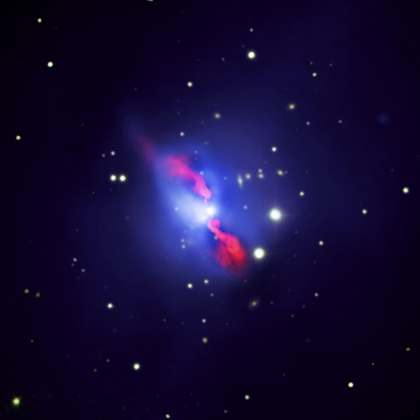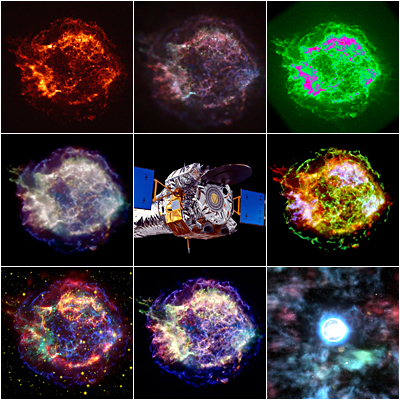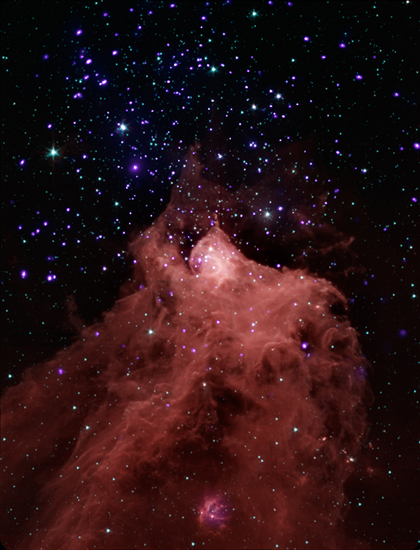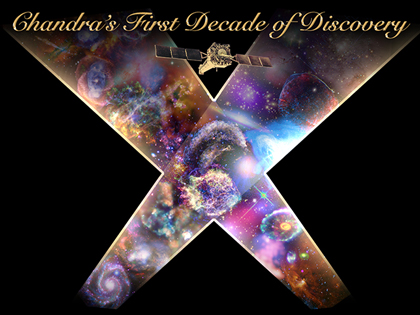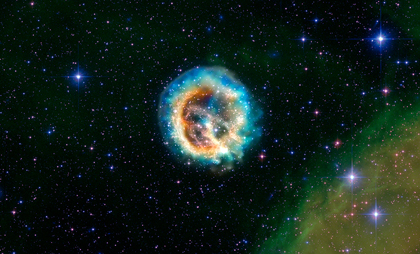Black Hole Pumps Iron
Submitted by chandra on Mon, 2009-09-14 13:45This composite image of the Hydra A galaxy cluster shows 10-million-degree gas observed by Chandra in blue and jets of radio emission observed by the Very Large Array in pink. Optical data (in yellow) from the Canada-France-Hawaii telescope and the Digitized Sky Survey shows galaxies in the cluster.




